skip-to-main-content
Sustainable Development Goals – DDGs - dda
The Sustainable Development Goals 2030
In September 2015, all 193 UN Member States adopted the 17 Sustainable Development Goals (SDGs)—a universal call to end poverty, protect the planet, and ensure that every person can enjoy peace and prosperity by 2030. Designed as an integrated framework, the SDGs recognise that advances in one area—such as affordable clean energy—reinforce gains in others, including health, education, decent work, and climate resilience. They also balance the three pillars of sustainability—social inclusion, economic growth, and environmental stewardship—emphasising that long-term development depends on progress across all dimensions.
Achieving the SDGs requires collective action from governments, business, civil society, and individuals. Innovations in technology, finance, and data—alongside local leadership and community engagement—are essential to mobilise the know-how and resources needed to deliver on the Goals worldwide.
The SDGs in the UAE
The United Arab Emirates was an early architect of the 2030 Agenda, actively shaping the Goals during negotiations and becoming one of the first countries to endorse them in 2015. Its leadership recognised that long-term prosperity hinges on balancing economic growth, social inclusion and environmental stewardship, positioning the SDGs at the centre of national development from the outset.
National frameworks that embed the SDGs
UAE Energy Strategy 2050 – sets a 50 % clean-energy target and cuts power-sector emissions by 70 %. Flagship projects such as the Mohammed bin Rashid Al Maktoum Solar Park exemplify this shift toward renewables.
UAE Net-Zero 2050 – first MENA commitment to carbon neutrality; projected to create 200,000 green jobs and add 3 % to GDP while deploying more than 25 sector programmes in power, transport, industry and agriculture.
Green Growth Strategy – transitions the economy toward low-carbon production and resource efficiency, advancing SDG 7 and SDG 12.
We the UAE 2031 – doubles national GDP to AED 3 trn, boosts non-oil exports and tourism, and targets top-10 global rankings in HDI and food security, directly supporting SDGs 4, 8 and 9.
Centennial 2071 – a 100-year vision that aligns education, innovation and quality-of-life objectives with future SDG milestones.
Measured progress
Insights from the UAE’s 2022 Voluntary National Review highlight tangible gains:
Literacy above 95 % and region-leading healthcare outcomes.
Workforce gender parity improving through progressive employment policies.
This data points underscore a trajectory toward inclusive, innovation-driven growth and confirm the UAE’s commitment to delivering the SDGs at both national and global levels.
To translate strategy into measurable progress, Dubai opted to become one of the first cities worldwide to align its Voluntary Local Review (VLR) with UN-Habitat’s Urban Monitoring Framework (UMF). This created a single, city-wide data architecture covering 76 indicators across society, economy, environment, culture, and governance—and produced an overall score of 93.09 / 100, placing Dubai in the “very strong” sustainability tier.
The VLR process itself was designed as a five-track, action-oriented workflow: data collection, gap analysis, strategy review, stakeholder engagement, and post-VLR implementation. The model institutionalises continuous improvement—each indicator is now refreshed bi-annually, with corrective actions assigned to lead agencies and tracked through the UMF dashboard.
Finally, Dubai leverages its position as a global hub to amplify results: hosting COP28, spearheading the SDG Cities Initiative in the region, and sharing open data dashboards so other municipalities can replicate successful policies. In short, the city’s journey is strategic rather than sectoral—anchored in robust governance, city-wide data, and an economic model that treats social inclusion and climate resilience as co-drivers of long-term competitiveness.
Strategic Alignment
Dubai treats the SDGs not as a parallel exercise but as the organising logic behind every major city agenda. A cross-government SDGs Task Force tests new initiatives against the Goals during the annual plan-and-budget cycle, while the Urban Monitoring Framework (UMF) supplies a single indicator set for tracking progress across agencies .
Five flagship strategies anchor the alignment:
City strategy
Core SDG links
Illustrative focus
Dubai Urban Plan 2040
SDG 11 (Sustainable Cities) & SDG 9 (Infrastructure)
Compact growth, transit-oriented development, heritage preservation, disaster-risk reduction
Dubai Net-Zero Strategy 2050
SDG 7 (Clean Energy) & SDG 13 (Climate Action)
100 % clean-energy target, smart grids, hydrogen and storage pilots
Dubai Economic Agenda D33
SDG 8 (Decent Work & Growth) & SDG 9 (Innovation)
Doubling GDP to AED 32 trn, AED 100 bn/yr digital-transformation spend, 65,000 Emiratis into future jobs
Dubai Digital Strategy
SDG 9 & SDG 16 (Institutions)
End-to-end digital government, AI and data governance, citywide cyber-resilience
Dubai Social Agenda 33
SDG 10 (Reduced Inequalities) & SDG 5 (Gender Equality)
Inclusion, social protection enhancements and community wellbeing programmes
During preparation of the Voluntary Local Review (VLR), these strategies were first mapped to specific SDG targets, then distilled into a bespoke indicator set validated through multi-agency workshops. This ensured that every KPI in the VLR speaks directly to a pillar of one or more flagship agendas, keeping measurement tight and action-oriented.
The result is a closed-loop system: strategic plans drive project portfolios; portfolios are monitored through UMF indicators; and UMF data feeds back into the next strategy refresh—locking the SDGs into Dubai’s long-term competitiveness narrative.
Progress Review
For the first cycle, Dubai’s SDG Task Force concentrated its performance deep-dive on nine Goals—SDGs 3, 4, 7, 8, 9, 11, 13, 16 and 17. These Goals map most directly onto the city’s current flagship strategies: health and education reforms (SDGs 3 & 4), the Net-Zero Strategy 2050 (SDG 7 & 13), the D33 Economic Agenda and Dubai Digital Strategy (SDGs 8 & 9), the Urban Plan 2040 (SDG 11), and governance-plus-partnership programmes that underpin global engagement (SDGs 16 & 17). By tying the review to active strategic plans, agencies could align KPIs, budget allocations and policy adjustments in a single management cycle, ensuring that progress tracking remained both actionable and tightly linked to Dubai’s near-term priorities.

SDG 3 – Good Health & Well-being
Dubai’s health system blends advanced clinical capacity with digital delivery and strong prevention. Life expectancy has risen to 78.8 years on the back of universal immunisation and world-class maternal care, while infant mortality has fallen to just 3.52 per 1,000 live births . Digital expansion is accelerating access: 374,583 tele-medicine consultations were completed in 2023 and AI systems handled more than 10,000 diagnostic cases, underpinning a strategy that makes specialist care available everywhere.
Sample KPIs
Life expectancy at birth: 78.8 years (2022)
Infant-mortality rate: 3.52 / 1,000 (2023)
Childhood vaccination coverage: 96.1% (2023)
Tele-medicine consultations: 374,583 (2023)

SDG 4 – Quality Education
Completion rates across all education cycles remain above 98%, supported by a network of 220 private schools serving over 365,000 students and a fast-growing early-childhood sector (274 centres). Dubai pairs academic attainment with future-ready skills; 98% of employers say graduates meet their digital-skills needs, reflecting deep collaboration between government, universities and business.
Sample KPIs
Primary-to-upper-secondary completion rate: 98.47% (2023)
Students in private schools: 365,572 (2023)
Early-childhood enrolment: 27,490 children (2023)
Employer confidence in graduate digital skills: 98% (2022)
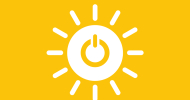
SDG 7 – Affordable & Clean Energy
Dubai’s Clean-Energy Strategy is translating into concrete capacity: renewable and waste-to-energy plants now provide 3,060 MW of installed clean power as of end-2024 . Grid efficiency has improved—electric-line losses fell to 2.0%, while an expanding urban EV network (now 382 public chargers) supports adoption. The cost of solar is down to 1.62 US ¢/kWh, among the world’s lowest.
Sample KPIs
Clean energy installed capacity: 3,060 MW (2024)
Electricity line-losses: 2.0% (2023)
Public EV charging points: 382 (2023)
Levelized cost of solar power: 1.62 US ¢/kWh (2023)
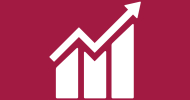
SDG 8 – Decent Work & Economic Growth
The Dubai Economic Agenda (D33) targets AED 32 trn GDP by 2033 and is already underpinning recovery: real GDP-per-capita grew 0.8% in 2023 after strong rebounds in 2021-22. To future-proof employment, Dubai is investing AED 100 bn annually in digital transformation, while 98% of employers confirm their workforce has the right digital skills.
Sample KPIs
Real GDP-per-capita growth: 0.8% (2023)
Annual digital-transformation investment: AED 100 bn
Employer confidence in digital skills: 98%
Business-confidence index (large firms): 143.3 (Q2 2024)
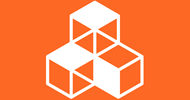
SDG 9 – Industry, Innovation & Infrastructure
Manufacturing remains a pillar, contributing 8.5% of GDP and 8.3% of jobs in 2023, while container throughput reached 14.5 million TEU—evidence of global-trade connectivity. Parallel investments in R&D, fintech sandboxes and 5G rollout (100% coverage) keep Dubai on track to be a “future-ready” city.
Sample KPIs
Manufacturing value-added: 8.5% of GDP (2023)
Manufacturing employment share: 8.3% (2023)
Container throughput (ports): 14.5 million TEU (2023)

SDG 11 – Sustainable Cities & Communities
Dubai Urban Plan 2040 prioritises compact, transit-oriented growth. Already 87.63% of residents live within an effective walk-catchment of a bus stop, and multimodal ridership exceeded 21.4 million passengers in Q1 2023. Heritage-site management scores 75% , matching growth with cultural stewardship.
Sample KPIs
Population within bus-stop catchment: 87.63% (2023)
Public-transport passengers: 21.4 million (Q1 2023)
Heritage-management compliance: 75%
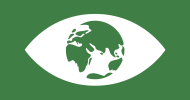
SDG 13 – Climate Action
Total GHG emissions stand at 52.18 Mt CO₂e (2023), forming the baseline for Dubai’s Net-Zero-by-2050 pathway. Clean-energy expansion (3,060 MW) and modal shifts—e.g., ≈400,000 t CO₂e avoided in 2023 via low-carbon public transport—show early abatement traction.
Sample KPIs
Total GHG emissions: 52.18 Mt CO₂e (2023)
Clean-energy installed capacity: 3,060 MW (2024)
Annual transport CO₂e avoided: ≈400 kt (2023)
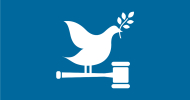
SDG 16 – Peace, Justice & Strong Institutions
Dubai pairs digital governance with community policing. The city is among the world’s five safest; homicide sits at 0.30 / 100,000, bribery at 8 / 100,000, and 95.47% of residents feel safe walking alone at night. Smart Police Stations, e-Courts and blockchain public-service platforms underscore a zero-tolerance stance on corruption and a justice system that remains 100% available remotely.
Sample KPIs
Intentional-homicide rate: 0.30 / 100,000 (2023)
Bribery incidence: 8 / 100,000 (2023)
Residents feeling safe at night: 95.47%
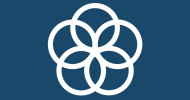
SDG 17 – Partnerships for the Goals
Dubai leverages finance, logistics and philanthropy to mobilise resources at scale. AED 5 bn in green bonds was raised in 2023 to fund clean-energy and smart-infrastructure projects. The Mohammed bin Rashid Global Initiatives channelled AED 1.8 bn to programmes reaching 111 million people in 105 countries, while the International Humanitarian City coordinated 800 aid shipments to 20 nations and pre-positioned over 10,000 t of relief supplies.
Sample KPIs
Green-bond finance mobilised: AED 5 bn (2023)
MBRGI disbursements: AED 1.8 bn; beneficiaries 111 m (2023)
Humanitarian City aid shipments: 800 shipments / 10,000 t supplies (2023)
These indicators illustrate measurable, year-on-year progress, while highlighting where intensified action—particularly on energy efficiency, mental-health provision and climate-finance scale-up—will secure Dubai’s trajectory toward the 2030 Agenda.
Performance at a Glance
Dubai’s latest self‑assessment delivered an aggregate UMF score of 93.09 / 100, placing the city in the “very strong” tier across all five domains; Environment 96.35, Economy 93.52, Culture 91.95, Governance 91.62, and Society 91.14.
For more details on the performance across the domains, download the Dubai’s Voluntary Local Review (VLR).
Initiatives Supporting SDGs Achievement
Dubai has launched a wide range of initiatives and programs aimed at achieving the United Nations Sustainable Development Goals (SDGs). These efforts span key sectors such as education, healthcare, employment, environmental sustainability, social development, and economic growth. By integrating sustainable practices across these areas, Dubai is making significant strides toward securing a prosperous, inclusive, and environmentally responsible future.
Was this content helpful

